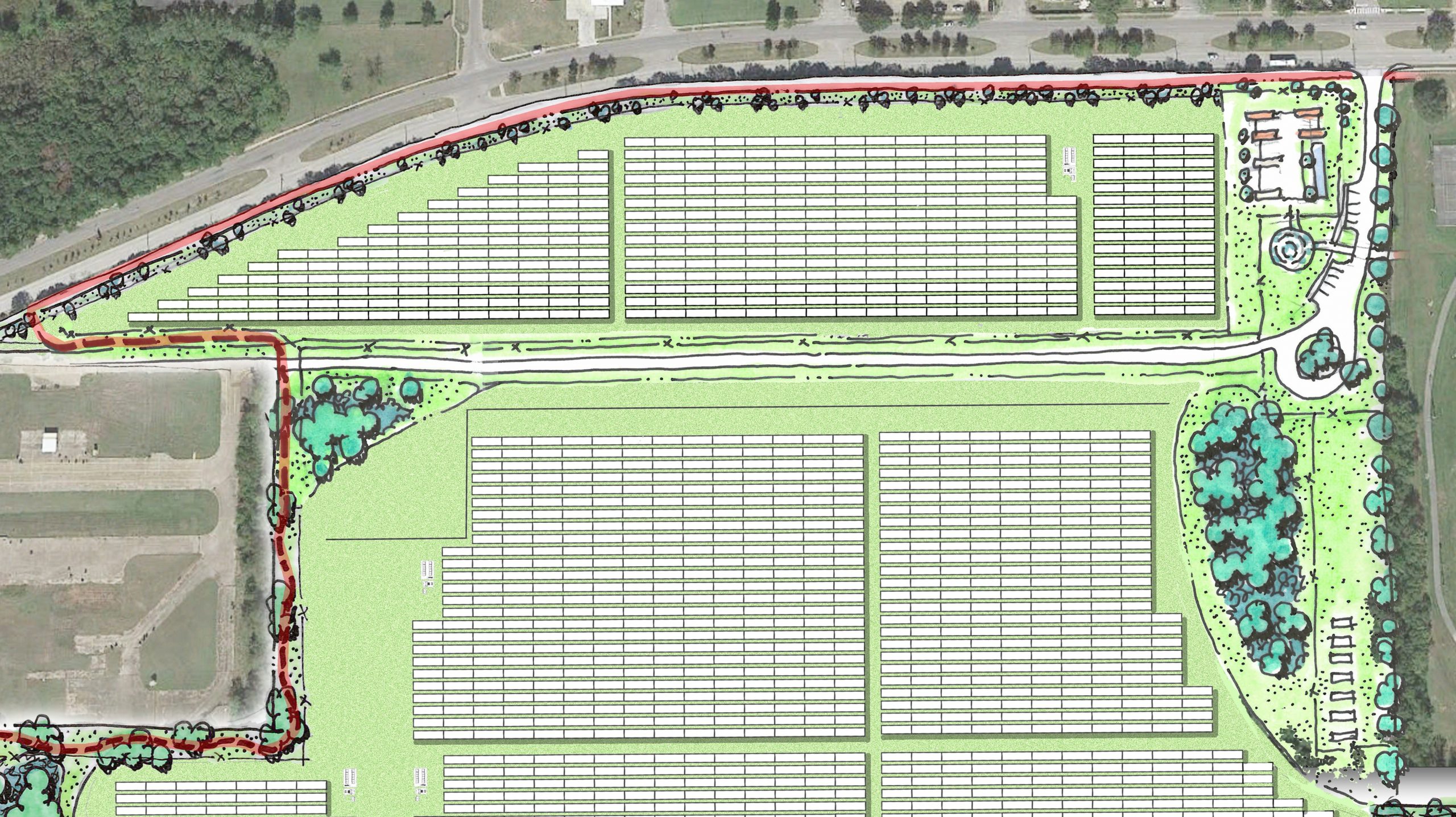Houston landfill transformed into US’ largest urban solar farm
The City of Houston is transforming an abandoned landfill into the US’s largest urban solar farm – turning an environmental blight into a shining example of climate resilience.
By C40 Cities | May 18, 2021
Residents in Houston’s Sunnyside community were all too used to the sight and smell of a local landfill site that had been left, empty and decaying, for decades.
The historically African-American neighbourhood was the site of a city-owned dump where Houston residents would bring their rubbish. Although the dump closed more than 50 years ago, rotting garbage buried in the landfill continued to emit methane gas.
Methane is a greenhouse gas that traps heat 28 times more effectively than carbon dioxide over a 100-year timescale. As a result, not only was the abandoned landfill an ugly blot on Sunnyside’s landscape, it was actively contributing to the climate crisis and harming local residents.
At the same time, Texas has the highest carbon emissions of any US state. The city needed ambition and innovation to help deliver on its commitment to cut emissions in half within the next decade – and it found it in the Sunnyside Energy Project.
A “good neighbour”
The overgrown dumping ground is currently being transformed into the nation’s biggest urban solar farm, due to be operational in 2022. Through a process of community engagement and consultation, it has become a beacon of climate resilience and ingenuity: turning a stinking, polluted and hostile environment into what residents now call a “good neighbour” to Sunnyside.
The project is the brainchild of a collaboration between Wolfe Energy, DF Renewables Distributed Solutions Inc, Gentile Glad Holloway O’Mahoney & Associates, Pyranal Design Group and IKON Environmental Solutions.
The team submitted a proposal to the C40 Cities Reinventing Cities competition, detailing how they would transform the abandoned landfill into a solar energy project that would generate clean energy, engage the local community and train local people in green industries.
Its transformation into a green energy hub shows how former contributors to global emissions can become forces for change and opportunity.
Their proposal to develop a 224-acre solar farm of 70 megawatt solar panels which will eventually produce enough green electricity to power 1,200 homes in Sunnyside was given the green light. An Energy Trust, set up to support the farm, is now on track to achieve a carbon positive status in Sunnyside within five years, helping Houston become more resilient to the impacts of the climate crisis.

Plans for the 224-acre solar farm of 70 megawatt solar panels.
Community wellbeing
From the outset, it was clear the community needed more than just a new solar farm, if they truly wanted to reinvent Sunnyside as a green and healthy place to live. That’s why the plans included walking and cycle paths to open up the solar farm to the community – providing a new green space for residents to explore. Electric vehicle charging stations will also be available on the site.
By promoting walking, cycling and electric vehicles, the Sunnyside Energy Project is helping to create a greener, healthier and more resilient community. While the switch to solar energy is a vital tool in Houston’s climate plans, it must sit within a more holistic transformation that includes a shift away from driving polluting vehicles and opening up green community spaces to local people.
This commitment to sustainable and generational change is also found in another component of project, the Agricultural Hub and Training Centre, or ‘Ag Hub’. The development of the hub recognizes that in the Race to Zero, and in the fight against the climate emergency, society needs to not only transition away from unsustainable sources of energy, but move towards an economic model that puts green jobs at its heart.
The Ag Hub provides training in green industries and jobs – building a skilled workforce which can continue to develop sustainable and resilient solutions to the climate emergency in the city. Students will have the chance to learn a range of new skills including aquaponics, beekeeping, bioremediation and horticulture with a focus on native plants.
In many ways, the old Sunnyside site represented some of the historic causes of the present crisis – with the landfill’s emissions of methane gas causing harm to our planet and to historically marginalized residents of the city. Its transformation into a green energy hub shows how former contributors to global emissions can become forces for change and opportunity.
“The Sunnyside landfill has been one of Houston’s biggest community challenges for decades, and I am proud we are one step closer to its transformation,” said Houston Mayor, Sylvester Turner.
“This project is an example of how cities can work with the community to address long-standing environmental justice concerns holistically, create green jobs and generate renewable energy in the process.”


